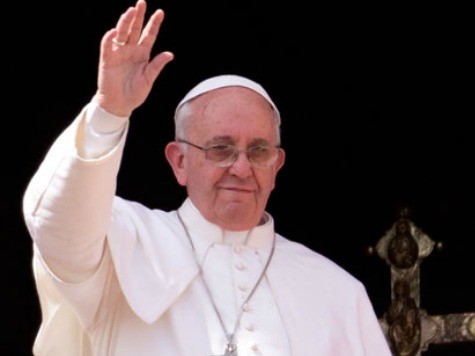
Pope Francis will return to his native South America for the first time since being elected pontiff in March, for the 28th World Youth Day (WYD), which will be held in Rio de Janeiro from July 22 through July 28.
According to Vatican Radio, Pope Francis will have a busy itinerary during his visit to Brazil. In a press conference on Wednesday morning, Father Federico Lombardi, director of the Holy See Press Office, said that the pontiff’s journey is “particularly significant in his continent, and this naturally lends it a particular sense of anticipation and participation.”
Lombardi continued with some historical notes:
As we know, it was not his decision to make his first trip to Latin America, but rather it was his predecessor Benedict XVI who had confirmed that World Youth Day would be held in Brazil, and had confirmed that ‘the Pope’ would be present, as at all the World Youth Days, even though the Pope in this case would not have been him. Therefore, Pope Francis is assuming the legacy of Pope Benedict XVI’s pontificate in making this trip. You will recall that practically the same thing happened at the last change of pontificate: Benedict XVI’s first trip was to Germany, his homeland, to Cologne for the World Youth Day decided by his predecessor John Paul II.
Lombardi went on to say that, since the change in pontificate, the program has been “adapted, we might indeed say intensified and enriched with further events.” He explained that the original program scheduled was less demanding to accommodate Pope Benedict’s advanced age and declining health, but that other elements could now be added with Pope Francis making the trip instead.
According to Lombardi, Francis will make a pilgrimage to Aparecida, an important religious city in Brazil and location of a famous basilica dedicated to Nossa Senhora Aparecida (Our Lady Aparecida). He will also visit the favelas, the slum areas of Brazil that are inhabited by the poor, a hospital, and will meet with the Comite de Celam, or, the Latin American Episcopal Council.
Asked about whether Pope Francis had concerns about the political unrest that has prompted protests and even rioting in Brazilian cities, Lombardi said that Francis has “total confidence” in Brazilian public officials to maintain security. The Holy Father, according to Vatican officials, will travel in the open-topped “popemobile” rather than in an armored car.
In Brazil, however, there are indications that officials are concerned that the demonstrations might intensify again while the pope is in town. Though protestors may not be opposed to the pope, they may attempt to take advantage of the increased media attention related to his visit to the area.
According to John Allen, Jr., writing at National Catholic Reporter, two movements that have complaints against the pope and the Church have announced plans to demonstrate:
A movement called SlutWalk has announced plans for a demonstration July 27 against the church’s position on women’s issues while a gay rights group has said it will stage a beijaço, in which gay couples exchange kisses and distribute condoms.
However, Gilberto Carvalho, chief-of- staff to Brazilian President Dilma Rousseff, anticipates that Francis will act as his own security system.
“The pope will be safe here,” he said, “and not because of the armed forces, but because of… the sympathy he inspires, since he represents a new hope not just for the church but for mankind.”
The official symbols of WYD – the Cross and an icon of the Virgin Mary – arrived in Rio on July 6 where they will remain until the end of the gathering.
The wooden cross was placed near the High Altar of St. Peter’s Basilica during the Church’s Year of Redemption, 1983-1984. At the end of that year, Pope John Paul II, soon to be canonized a saint, gave that cross to all youth as a symbol of Christ’s love. In presenting the cross, John Paul II said:
My dear young people, at the conclusion of this Holy Year, I entrust to you the sign of this Jubilee Year: the Cross of Christ! Carry it throughout the world as a symbol of Christ’s love for humanity, and announce to everyone that only in the death and resurrection of Christ can we find salvation and redemption.
In 2003, John Paul II presented the world’s youth with the icon of Our Lady, Salus Populi Romanix. In entrusting this icon to young people, the pope said, “From now on it will accompany the World Youth Days, together with the Cross. Behold, your Mother! It will be a sign of Mary’s motherly presence close to young people who are called, like the Apostle John, to welcome her into their lives.”

COMMENTS
Please let us know if you're having issues with commenting.